When we went to Burgundy last weekend, I was called into action to make dessert. It was crazy cold, as in…a few degrees below freezing, which I wasn’t prepared for; the week before, we were all bouncing around town wearing T-shirts in Paris. But we needed a little break as the week before, when I injured my shoulder, was pretty intense as I basically couldn’t do anything. So I was happy to head to the countryside to stay with a friend. (And eat gougères!) I swear, they worked just as well, in conjunction with the local Chablis, as the painkillers the doctor prescribed for me.
Actually, they worked better: I had to go off the pills after having a slightly “bad trip” on them. The gougères, on the other hand, had zéro side effects…
Baking in other people’s kitchens poses a bit of a challenge for me. I’ve outfitted my kitchen with all my favorite baking equipment and ingredients. I know where everything is and I know my ovens well. So it’s hard for me to bake elsewhere, especially when people find out I was a professional baker. I don’t want to disappoint anyone after such a build-up.
So I try to keep it simple to avoid failure and knew an upside-down cake would be well-received and easy to make without a lot of fuss or special ingredients or equipment.
April is an “in-between” time, and there was no fruit at the market except for apples and oranges (pears were finished, and there was no rhubarb yet), so I went with some reliably good navel oranges and made my upside-down cake with them.
The one I made there came out well, but the blonde cassonade sugar (light brown cane sugar) behaved a bit differently than the usual sugar I use, so it wasn’t as well caramelized as I like my upside-down cake. Rather than stressing over those things, as I see (and hear) home cooks doing, I realize people have worse problems in the world than a too-light cake. And since most people asked for seconds, I figured I was in the clear.
Back home, I decided to make it again, this time with all my equipment and blood oranges that I found at my local market. Their season is waning but navel oranges are pretty available year-round, so you don’t have to wait for a trip to Burgundy, or for blood orange season, to make it. Although I recommend both.
A friend who is very into natural foods orders dark cassonade sugar from a supplier in huge 20-kilo bags (around 44 pounds), and Romain loves it and eats it with a spoon. It tastes like the tropics and has a remarkably rich, caramelly, malty flavor. I don’t know where she gets it, but for Romain’s birthday, she gave him a whole bag of it and my job is to keep using it, which I suspect I’ll be doing for a while. But I used some for the topping for this cake, and there were zero complaints about the topping…or the cake.
A few tips!
-I drained the orange slices in a mesh strainer for about 30 min before using. Getting rid of a bit of the excess liquid makes the caramel-like topping thicker and stick better.
-French brown sugar is a bit different than what’s used in the U.S., so here I used 1/2 cup of light brown sugar and 1/4 cup of dark brown sugar. But I generally use all light brown sugar. Feel free to go either way.
(More intel on French sugars and American baking ingredients are at those links.)
-You’ll need about 4 large oranges or 5-6 medium oranges, roughly 2 pounds (900g). It’s best to buy a few extra because ya never know if some will crumble (or if a few will make it into your mouth), and anyone can use extra oranges if you don’t need them—right?
-Wanna dial this cake up a bit? Add a handful of raspberries, blueberries, or blackberries to the mix! Sprinkle a generous handful over the oranges, strategically placing them in the spaces between the orange slices, and bake as directed.
Bonus Pro Tip: I grate the zest of 2-3 oranges into the butter, mash it in, and let the butter rest for a while (at least an hour, but several hours ahead is even better) at room temperature. Even better, you can grind the zest with the sugar in a mini food processor to extract as much of the flavor from it as possible.
And lastly, even if you’re not a fan of le micro-onde, I gotta say, this cake is a lot better served warm. You can zap wedges for about 10 to 15 seconds to warm them up just before serving. It’s the best use of the microwave that I’ve found yet!
Orange Upside Down Cake
One 9-inch (23cm) cake, about 8 servings
I would probably use the option with dark brown and light sugar since oranges have more liquid than other fruits.
For the fruit layer:
3 tablespoons (45g) butter, salted or unsalted
1/2 cup (90g) light brown sugar and 1/4 cup (45g) dark brown sugar (or 3/4 cup packed (135g) light brown sugar)
4 large or 5-6 medium navel or blood oranges (about 2 pounds, 900g)
For the cake layer:
8 tablespoons (115g) unsalted butter
3/4 cup (150g) granulated sugar
1 teaspoon vanilla extract
2 large eggs, at room temperature
1 1/2 cups (210g) flour
1 1/2 teaspoon baking powder, preferably aluminum-free
1/4 teaspoon salt
1/2 cup (125ml) whole milk, at room temperature
To make the topping, melt the 3 tablespoons (45g) of butter in a heatproof 9-inch (23cm) cake pan (not a springform) or a 9- to 10-inch (23-24cm) cast-iron skillet. Add the brown sugar and cook while stirring, until the sugar is melted and begins to bubble. Remove from heat and let cool. Don’t worry if there are a few lumps; those will dissolve later.
Once cool, slice the oranges and arrange the slices in concentric, overlapping circles over the melted brown sugar.
To make the cake, preheat the oven to 350ºF (190ºC).
Beat the 8 tablespoons (115g) of butter and sugar until light and fluffy in a stand mixer fitted with the paddle attachment, or by hand in a large bowl. Add the vanilla, then the eggs, one at a time, stopping the mixer (if using) in between additions and scraping down the sides of the bowl before adding the second one.
In a small bowl, whisk or sift together the flour, baking powder, and salt.
Stir in half of the flour mixture into the beaten butter and egg mixture, then the milk, then stir in the remaining dry ingredients. Even if using a stand mixer, I usually do the last mixing by hand so it doesn’t get overmixed; stir just until the last of the flour is barely incorporated into the batter.
Drop the batter in four blobs over the oranges and spread it gently until it’s even, doing your best not to disturb the oranges underneath. Bake for 30 to 45 minutes (depending on the size of the pan and the thickness of the batter). The cake is ready when it begins to pull away from the sides of the pan and the center feels just set. A toothpick inserted into the center should come out nearly clean.
Remove from oven and let cool about 20 minutes. Run a knife around the edge of the cake to separate it from the pan, then overturn a cake plate on top. Wearing oven mitts, flip the cake over, taking care as some hot caramel might escape and drip out, and you don’t want any landing on you.
Any caramel stuck in the pan can be scraped out and dripped over the warm cake.
Serving: Serve warm (preferably) or at room temperature with whipped cream or vanilla ice cream.
This post is for all subscribers. Thanks for subscribing!
The next chapter (#4) of my Paris Apartment Stories (about our renovation) is going out soon to paid subscribers. If you’d like to upgrade your subscription, you can do so here.





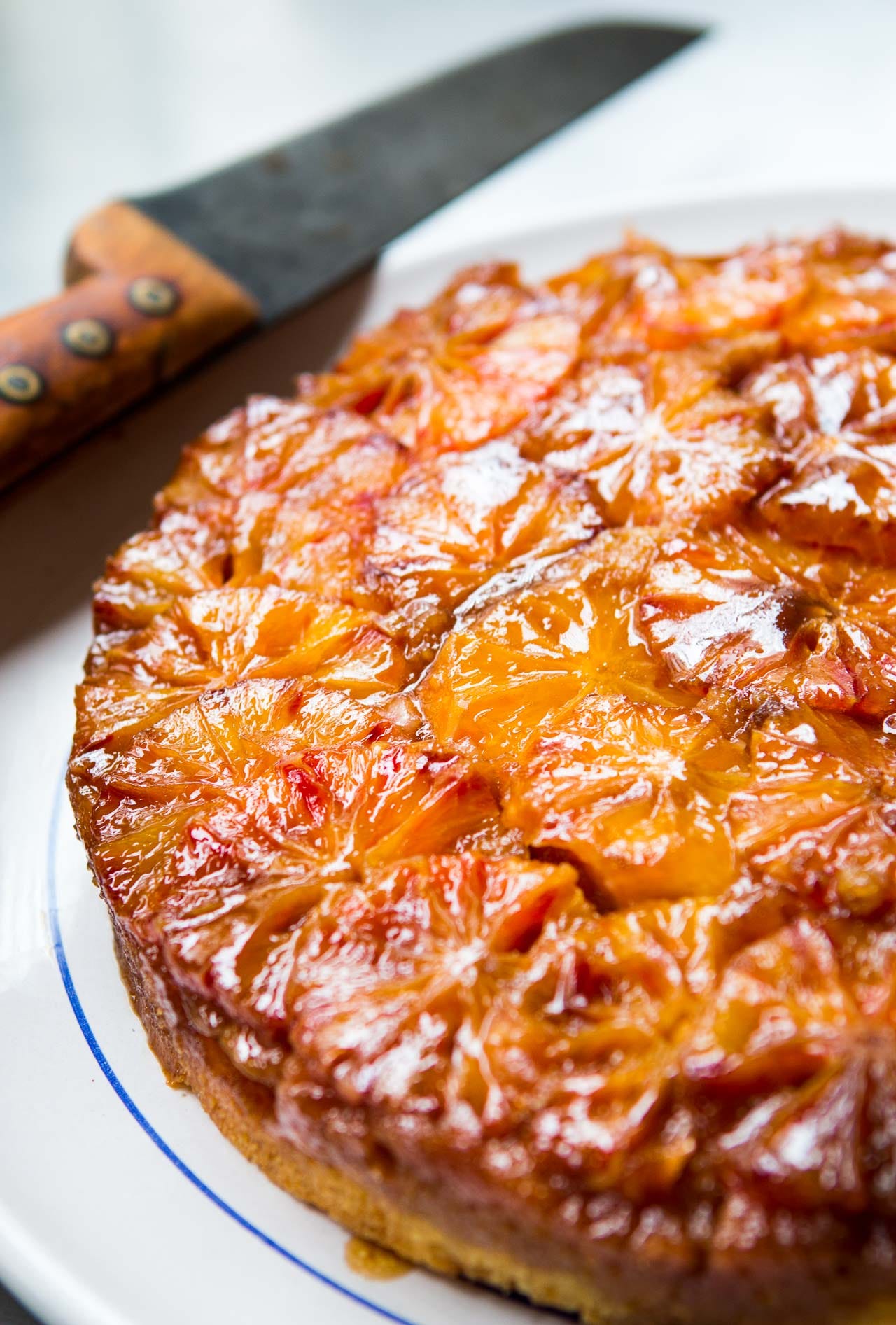
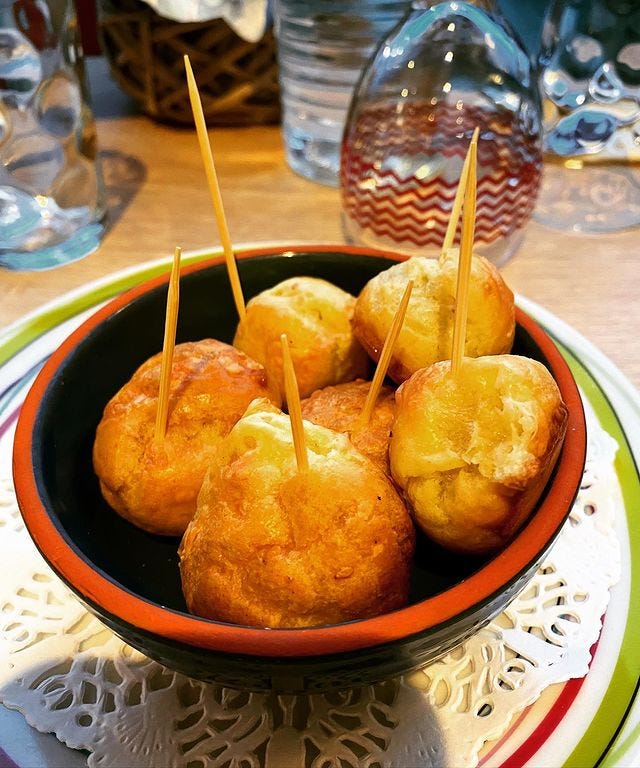

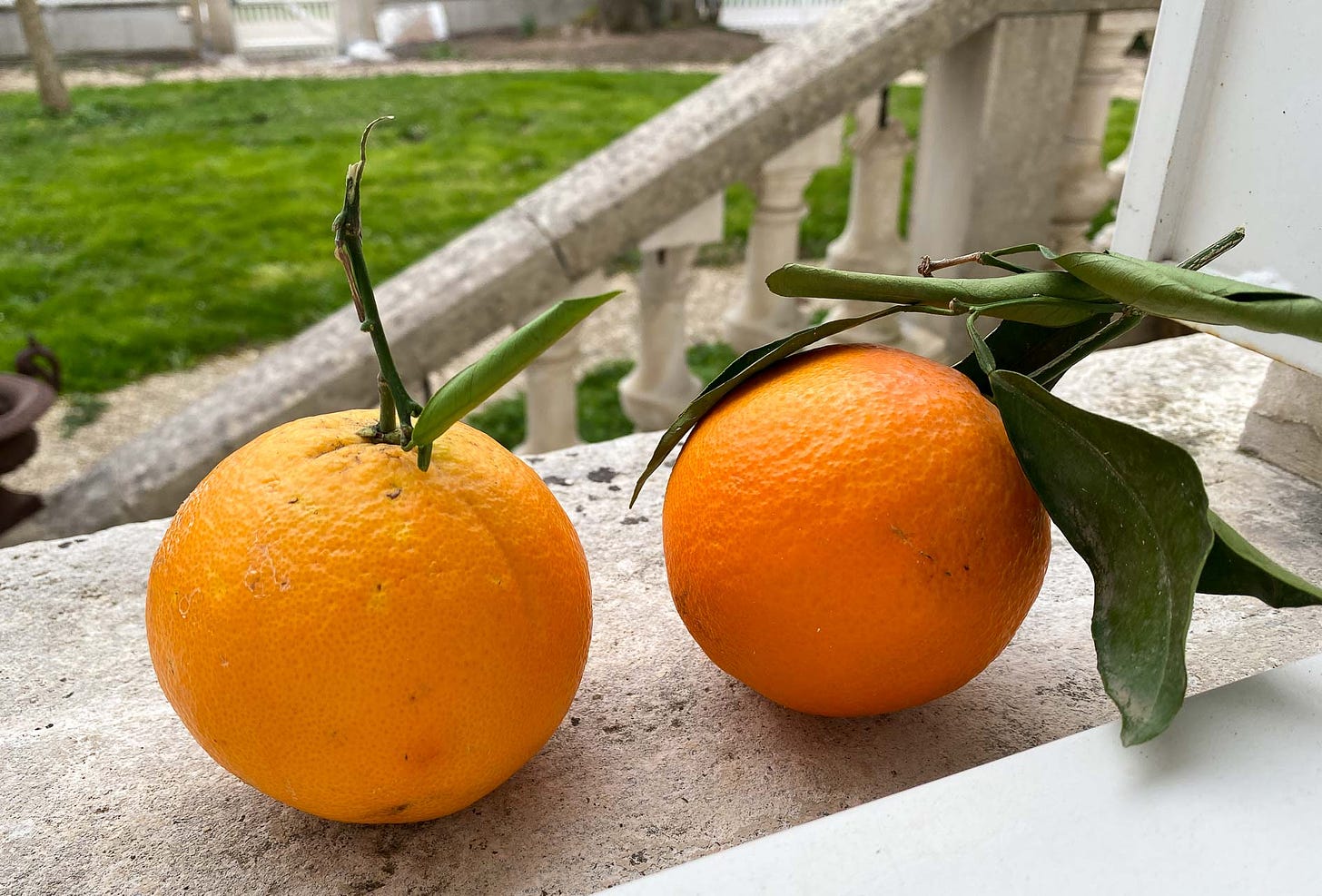
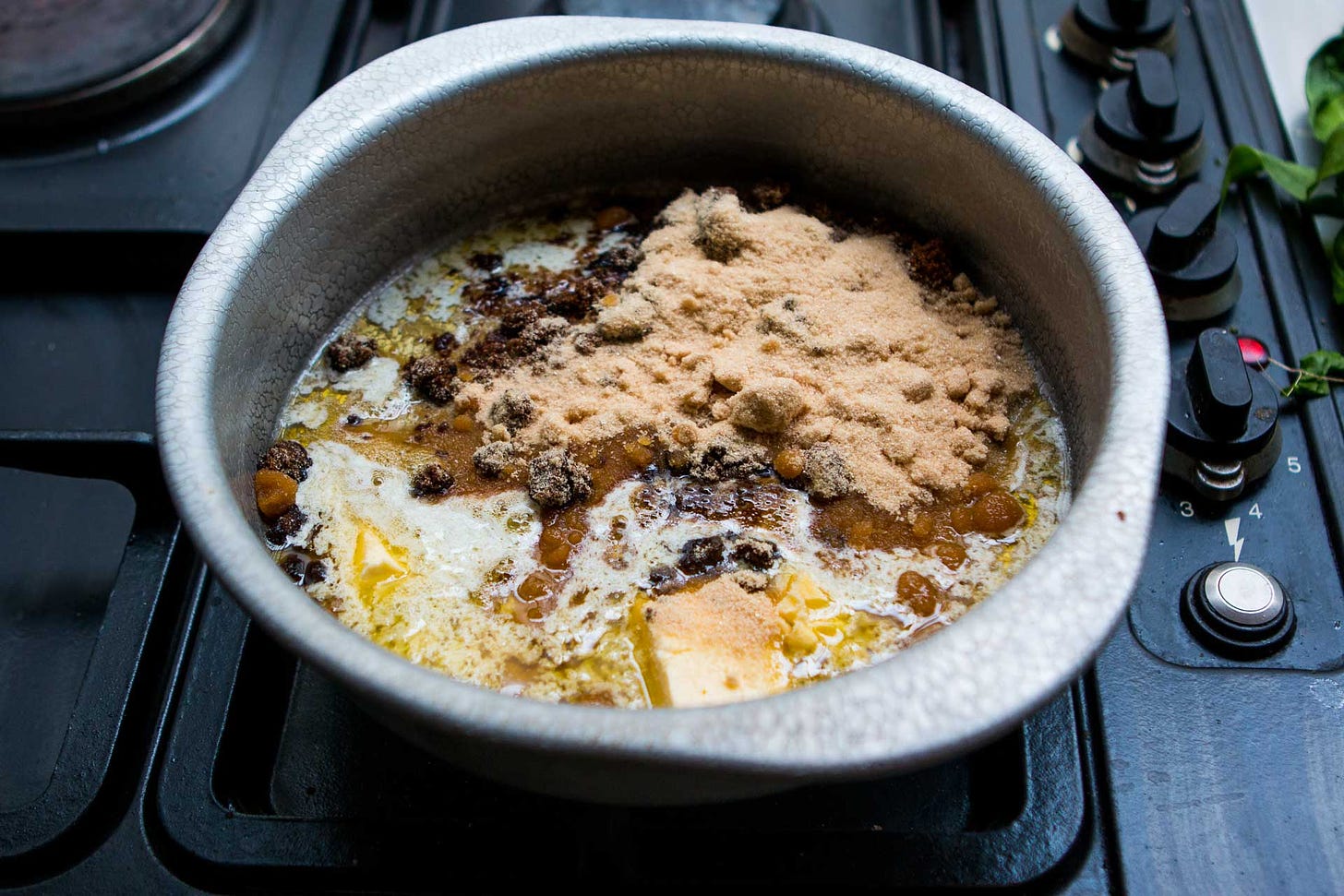

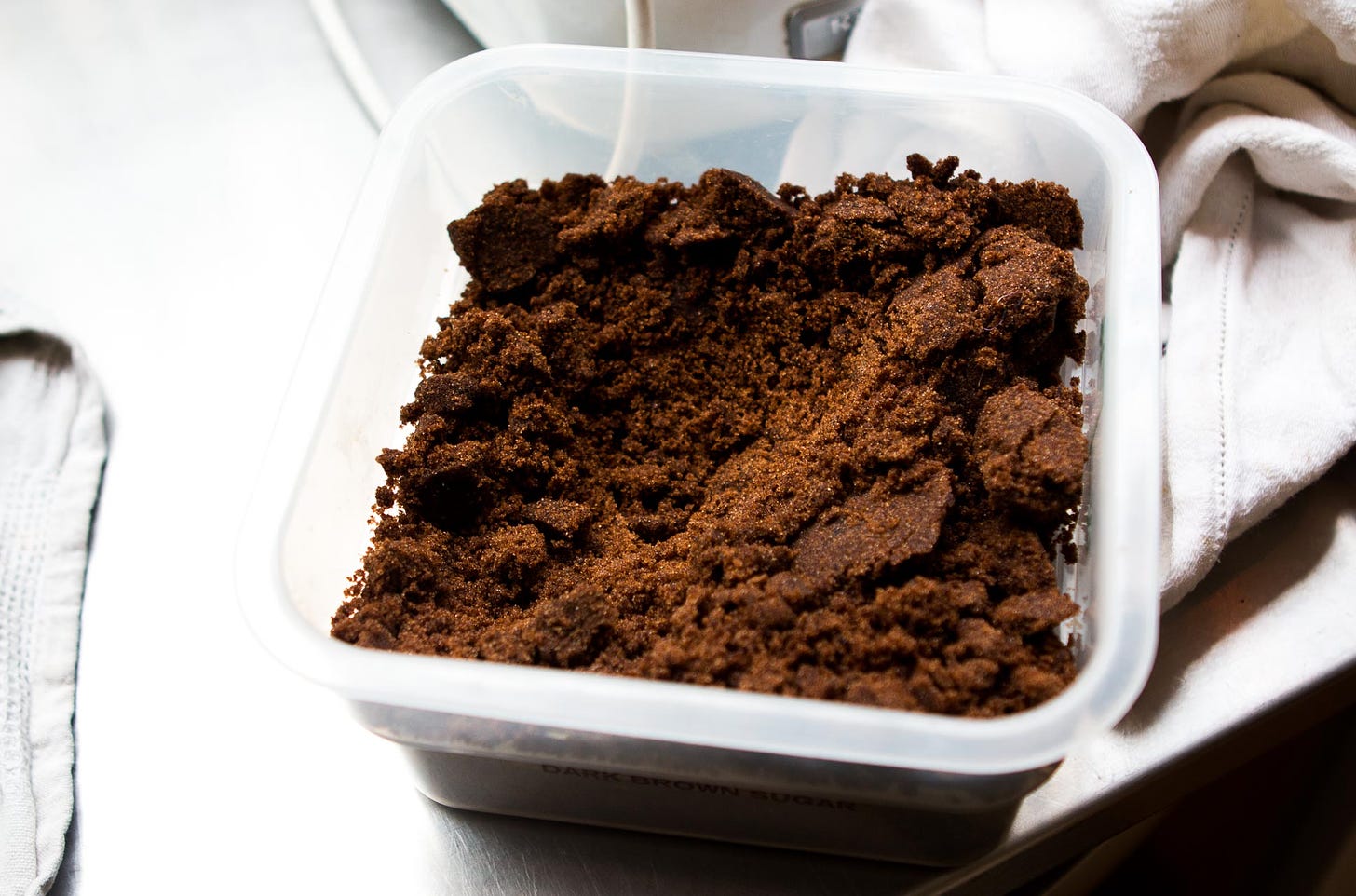


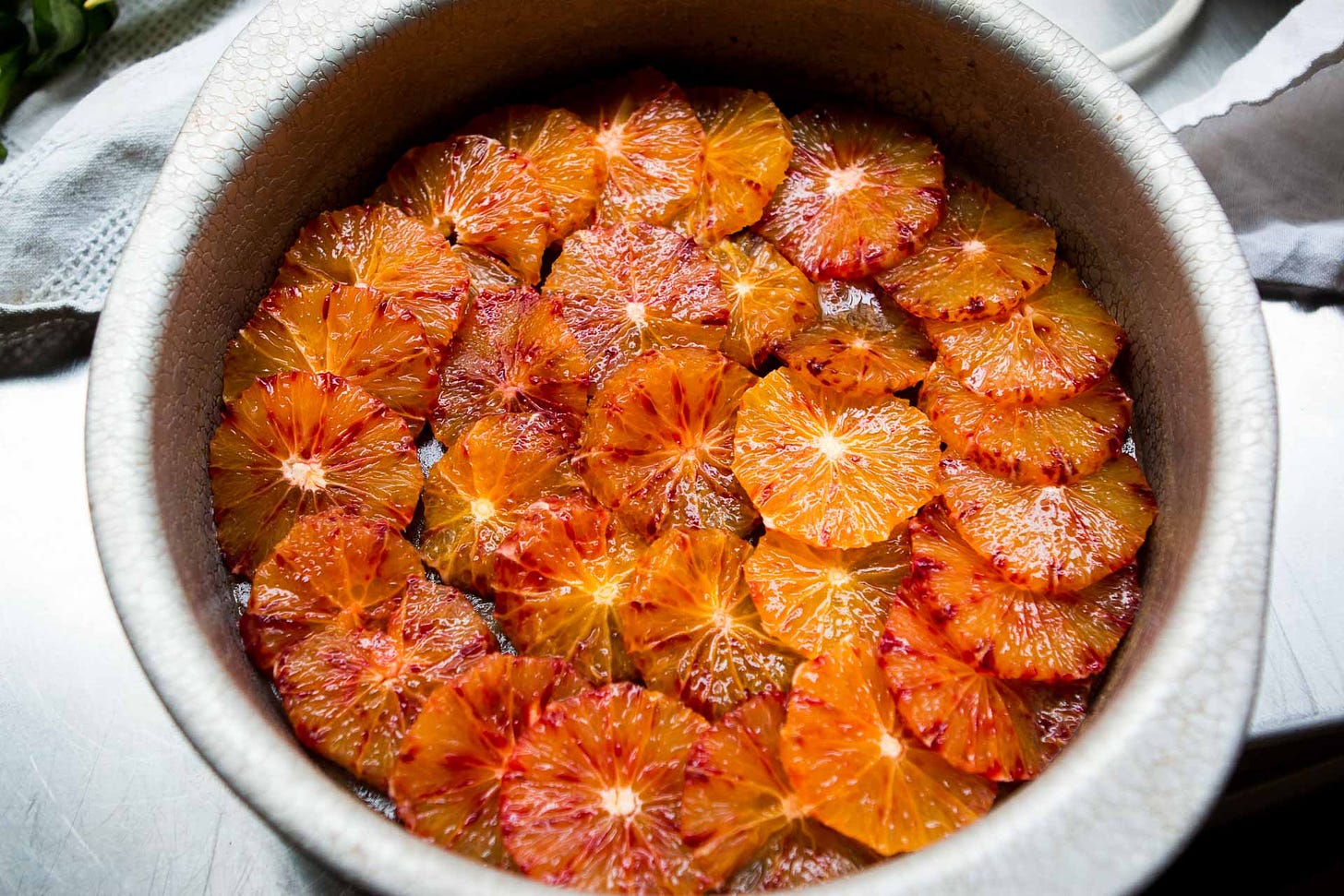
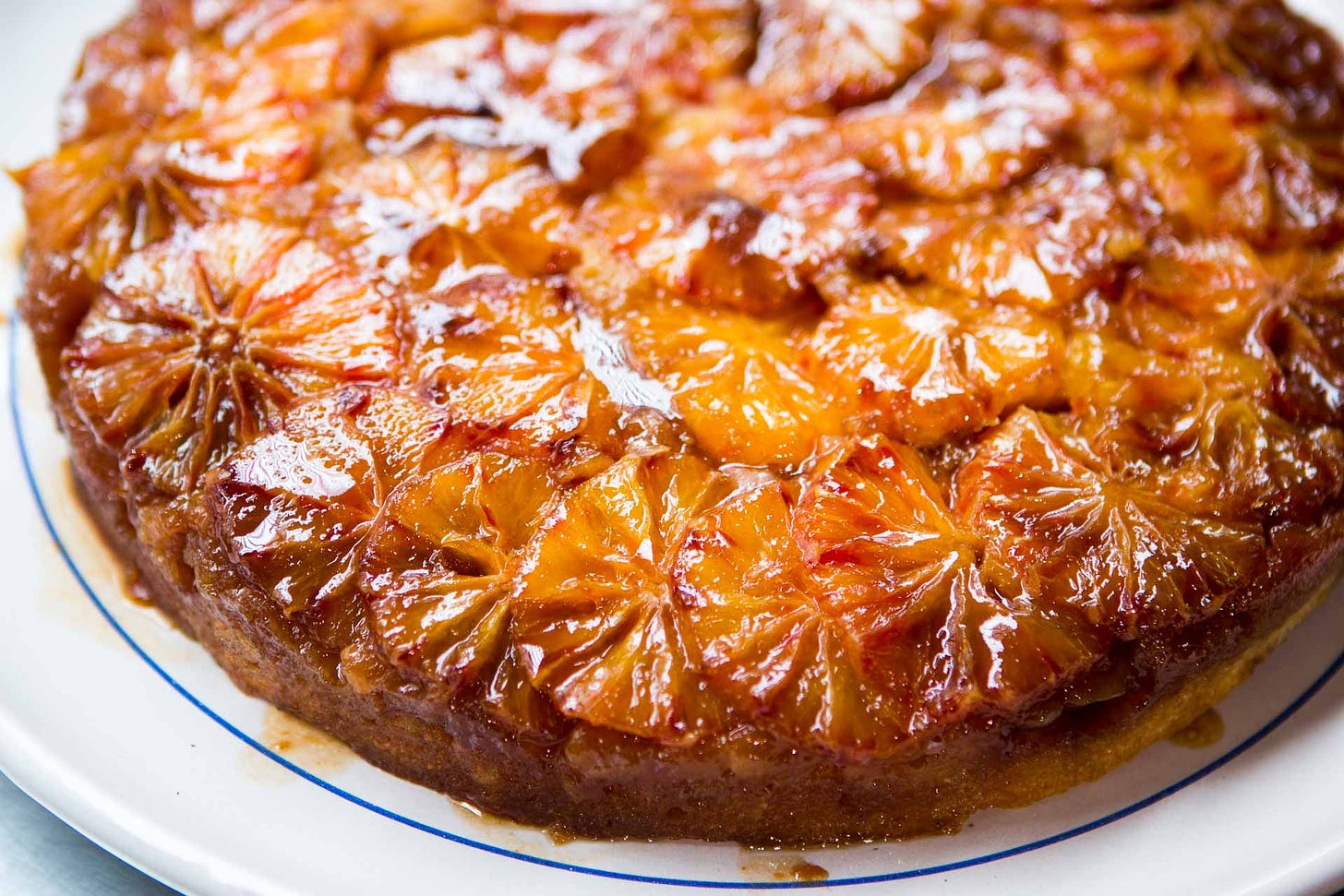



To print or save-On my Mac, I use "Print" option under "File," and scroll to pages where recipe appears. In this case, the actual directions begin on page 9 and go to page 10. I then include that in "print options" and save as PDF. Hope that might help others-you really want to be able to save and make David fabulous offerings. But, first order of business, make and freeze more Gourgere dough... then, cake!
This looks absolutely delightful and I’m going to make it tonight. Thank you!